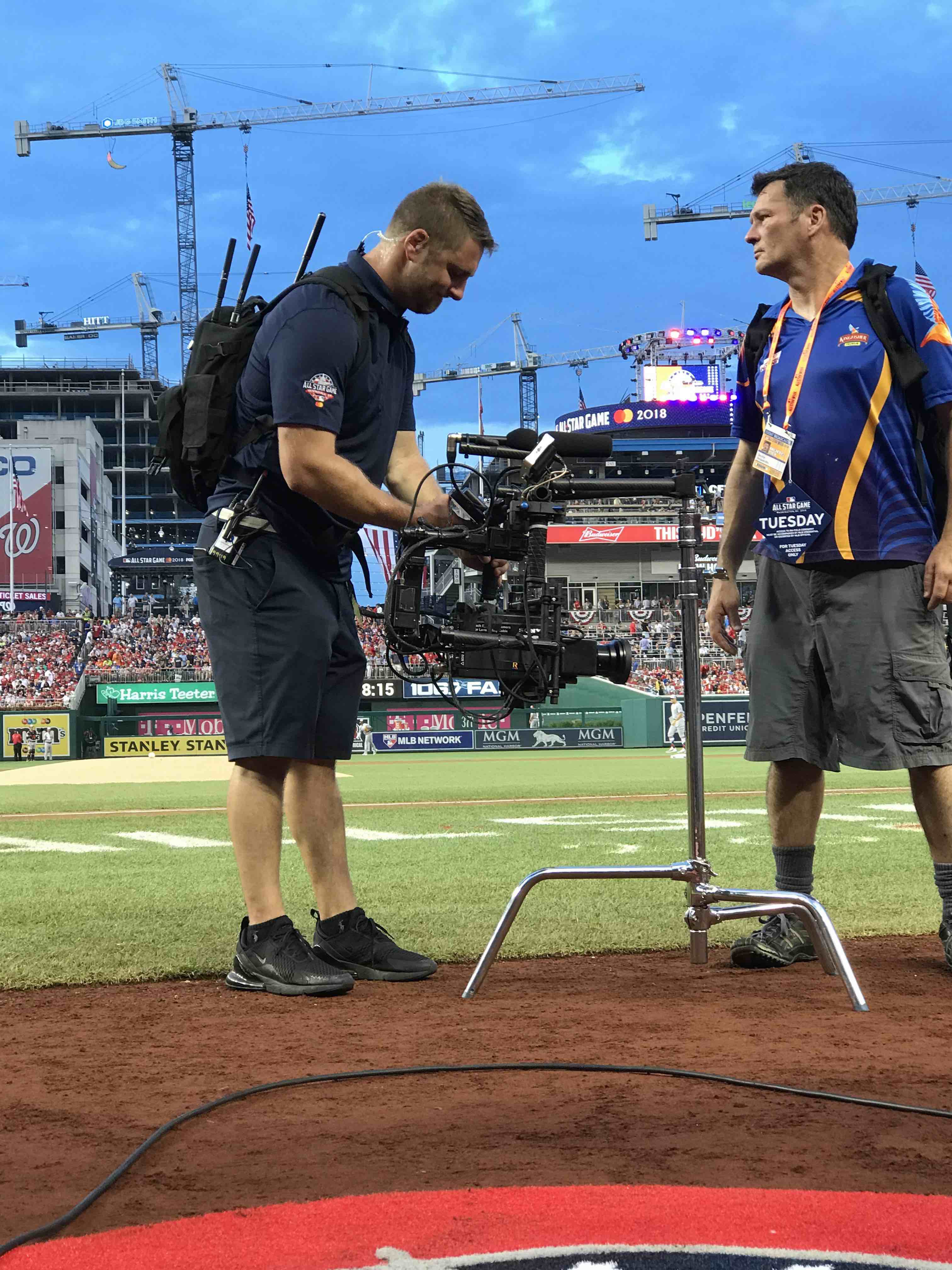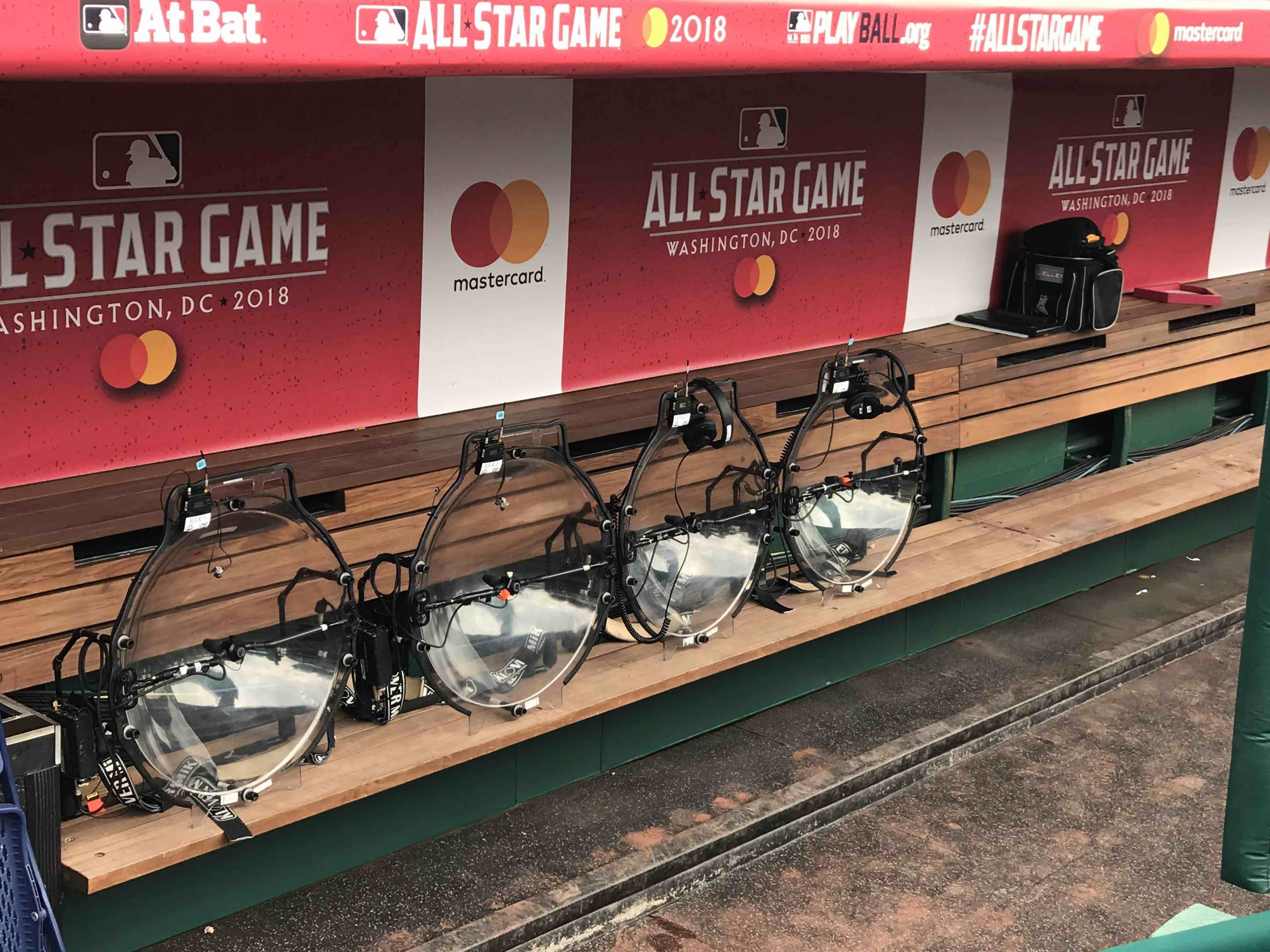CP Communications Expands RF Coverage for 2018 MLB All-Star Events
NEW YORK--CP Communications, a provider of live event production services expanded its RF presence at this year’s MLB All-Star Game at Nationals Park in Washington DC.

With a crew of 27 — its largest yet to support the All-Star Game—CP returned with for the 18 consecutive year with its RFHD7 53-foot production truck, which served as the central communications and distribution point for each client and system involved in the broadcasts and events.
The CP Communications team managed and coordinated all RF activities for the global All-Star Game, network studio shows, Home Run Derby, and a Red Carpet Show. Additionally, and for the first time, CP Communications provided RF support for various digital and streaming productions. The company also provided a production kit for PLAY Ball Park, an adjacent venue that served a free interactive center during All-Star Week with baseball celebrity appearances, adult baseball and softball games, youth tournaments, batting cages and more.

“The events surrounding the All-Star Game are different each year depending on each client’s needs, which results in strategic adjustments in crew and technology,” Michael Mason, president of CP Communications. “With RFHD7 as our resource distribution center, our 27-member crew worked hard to meet intensive scheduling deadlines across multiple venues, and eliminate disruptions in the RF spectrum that would adversely affect signal quality. The latter included clearance of 420 RF frequencies for wireless communications alone.”
The complete RF infrastructure across all events and venues included 50,000 feet of fiber-optic cable to support multiple camera feeds (including 14 RF camera feeds), video monitors, data communications, transmission links and an extensive Dante networking solution from Audinate among other systems. Dante networks were used across several events to carry digital intercom, IFB, and microphone feeds, with a separate headend to support analog audio needs.

The technical infrastructure employed much of the same equipment as in previous years on a larger scale. However, CP Communications this year added a Pliant CrewCom intercom systemfor productions associated with the Home Run Derby, as well as All-Star Game ceremonies included the National Anthem, God Bless America and the 7th Inning Stretch.
“The Pliant system enabled us to provide a much wider area of coverage,” said Mason. “The antennas in this system run data streams over Cat5, which gives it a lighter architecture that is very easy to deploy overall. We deployed antennas across several positions to maximize coverage, and even integrated all communications carried over Pliant with scoreboard control operations.”
The professional video industry's #1 source for news, trends and product and tech information. Sign up below.
Other specific highlights of the RF transmission infrastructure include:
- Two RF cameras, 39 RF microphones and an EFX audio-submix package for Fox Sports’ All-Star Game and Media Day video/audio needs
- Nine parabolic dishes and 80 RF radios for Fox Sports’ All-Star Game and Media Day communications requirements
- Four RF cameras, six Sennheiser head-worn microphones and six stereo RF IFBs for the ESPN Home Run Derby production and Baseball Tonight onsite studio show
- Twenty RF microphones (eight player, eight EFX, four handheld with talkback, and four in-ground) and four RF IFBs for the Home Run Derby production
- RF Steadicam, handheld and batting cage POV cameras for network pre- and post-showproductions
- Dante Audio over IP networks for the All-Star Game, Media Day, Red Carpet Show and network pre- and post-show productions, carrying Shure Axient Digital and other 1.4 GHz microphone feeds
- A Sony 4300 RF handheld camera for live streamed productions, with a WaveCentral integrated transmitter and paint receiver
Beyond Dante, Mason and his team also employed MADI and analog audio networks depending on each client’s infrastructure. “By keeping everything in the digital realm as often as possible, we eliminate the problems that haunt analog audio such as cable management, power distribution, and hum and buzz,” he said. “However, we’re always fully prepared to work with any client’s infrastructure across analog and digital.”
